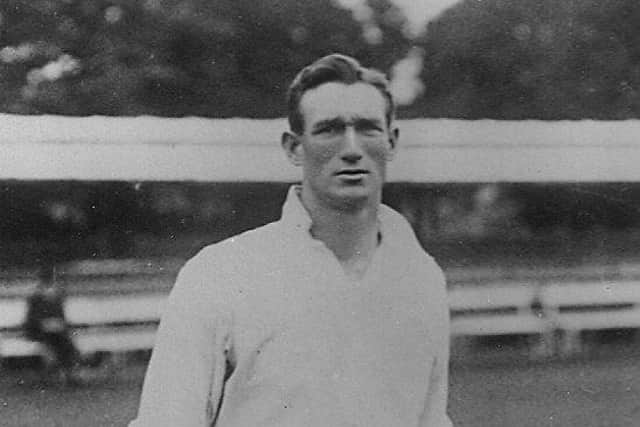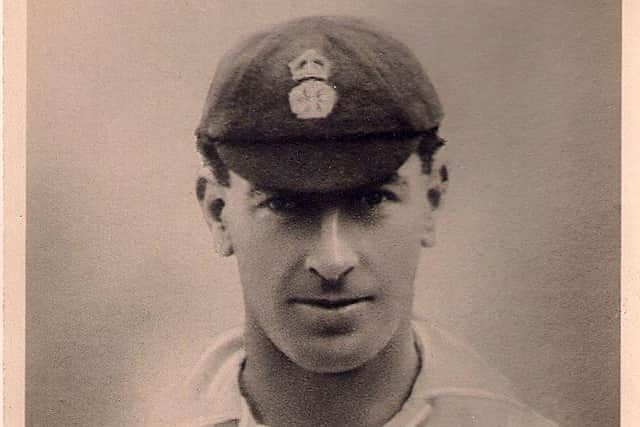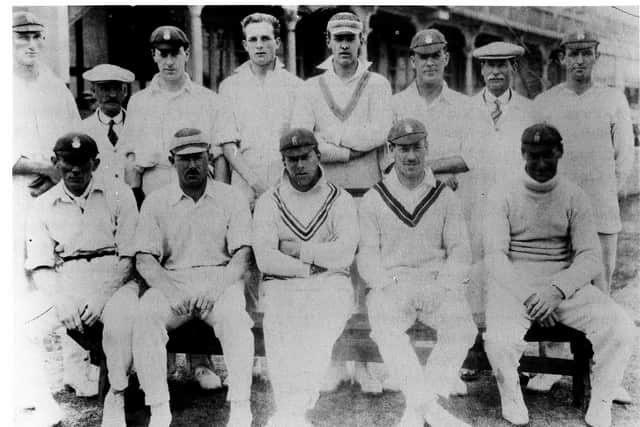Hampshire’s most amazing victory – the miracle of Edgbaston in 1922


Who knows how it would have turned out, but one thing is almost certain - it would not have produced a story anywhere near as amazing as Hampshire’s win at the same ground almost a century ago.
That’s because NO Hampshire side have ever managed to come close to repeating the extraordinary events of June 14/15/16 June 1922.
Almost certainly, no side ever will.
Advertisement
Hide AdAdvertisement
Hide Ad

Ninety-years on, The News today looks back at one of the most astounding games in English cricketing history.
*
Cricket lovers often talk about the miracle of Headingley 1981, when Ian Botham (with the bat) and Bob Willis (with the ball) combined to give England victory over Australia after being forced to follow on.
Then there was the second miracle of Headingley last year, when Ben Stokes and Jack Leach put on an unbroken last-wicket stand of 76 to give England another dramatic Ashes win.


Both matches provided virtually unsurpassable sporting theatre.
Advertisement
Hide AdAdvertisement
Hide AdBut in a way, neither of those memorable games can hold the proverbial candle to Hampshire’s victory at Edgbaston in the 1922 Championship.
This is why: replying to the home side’s 223 all out total, Hampshire were dismissed for just FIFTEEN. And they still won!
Henry Howell, who had played four Tests for England in Australia in 1920/21, bagged 6-7 and skipper Freddie Calthorpe took 4-4. The legendary Phil Mead top scored with six not out, and there were eight ducks and four leg byes.
The mayhem had taken place in 8.4 overs.
Since the Championship began in 1890 - 130 years ago - only three lower team totals have ever been recorded in the competition’s history.
Advertisement
Hide AdAdvertisement
Hide AdIn 1907, Northamptonshire were skittled for 12 against Gloucestershire at the Spa Ground in Gloucester.
That established a new low, six years after Nottinghamshire had been routed for a very unlucky 13 at Trent Bridge by Yorkshire.
We then fast forward to 1983 when Surrey collapsed to 14 all out against Essex at Chelmsford.
A year after being routed at Gloucester, Northants collapsed to 15 all out against Yorkshire in Northampton - the score Hampshire equalled at Edgbaston.
Advertisement
Hide AdAdvertisement
Hide AdBut despite being humiliated in their first innings, this tale has a glorious ending - for Hampshire eventually romped to victory.
Unsurprisingly, their 15 all out is lowest total in Championship history made by a team which eventually triumphed in the game.
That beat the record set only two years earlier, when Gloucestershire were all out for 22 against Somerset in Bristol in their first innings yet ended up winning by four wickets.
Astonishingly, after being rolled over for 15, Hampshire made a mammoth 521 in their second innings after being asked to follow on before a shell-shocked Warwickshire were dismissed for 158.
Advertisement
Hide AdAdvertisement
Hide AdUnbelievably, that left Hampshire winners by 151 runs - a result that had obviously looked totally unlikely the previous day.
But it wasn’t Hampshire’s top order who put the county in a position to win. No, it was No 6 George Brown and tailender Walter Livsey.
Hampshire were 274-8 - a lead of only 66 - when Livsey walked out at No 10 to join Brown in the middle.
Hopes were not high.
In 139 previous first class innings, spanning nine years since his Hampshire debut in 1913, Livsey had never scored a century. Only three times had he reached 50.
Advertisement
Hide AdAdvertisement
Hide AdIn his previous seven innings, including a first innings duck at Edgbaston, he had not reached double figures.
So it was no doubt a shock to many that he helped Brown - who had been out first ball in the first innings - wrestle the initiative away from Warwickshire by adding 177 for the ninth wicket.
Brown, who had made his England Test debut the previous summer against Australia, was finally out for 176 - a total which ended up his fourth highest in a first class career spanning 601 matches and 1,012 innings.
Still Livsey went on, though, passing his previous Championship best of 70 and adding a further 70 for the last wicket with No 11 Stuart Boyes, who like Brown had also been dismissed first ball in the first innings Boyes this time made 29 as Hampshire’s last two wickets put on 247..
Advertisement
Hide AdAdvertisement
Hide AdLivsey finished on 110 not out - a score which would prove to be the highest of his 455 first class innings (he would only ever reach three figures once more).
But Brown and Livsey’s heroics had just brought Hampshire back into the game: Warwickshire still needed ‘only’ 263 to win - less than the last two visiting wickets had managed between them.
And if a tailender with Livsey’s record could score a century, surely Warwickshire’s top order could cope?
Right?
Wrong. Very wrong, as it turned out.
For two of the most prolific wicket-takers in the Championship’s history combined to deliver what will always remain one of the most unbelievable results in cricketing history.
Advertisement
Hide AdAdvertisement
Hide AdSouthsea-born Jack Newman bagged 5-53 and Alex Kennedy took 4-47 as the hosts crumbled from 85-2 to 158 all out.
Southsea-born Newman played for Hampshire between 1906-1930. In all, he claimed 2,054 first class wickets - 1,860 of them in the Championship. His 5-53 haul - including clean bowling four of Warwickshire’s top seven -was one of 134 occasions in which he took five or more wickets.
Only 18 men have ever taken more Championship wickets than Newman, and luckily for Hampshire at Edgbaston new ball partner Kennedy was one of them.
He was to end with 2,418 Championship wickets, the sixth highest total in the competition’s history.
Advertisement
Hide AdAdvertisement
Hide AdBoyes chipped in with the wicket of Cyril Smart and Hampshire had won after being asked to follow on for only the second time in their history. Almost a century later, they have only ever won three games in that manner.
That is not a big shock; after all, only 39 teams in Championship history have ever won after being asked to follow on.
Of those 39 games, only once has a team won by a bigger margin than Hampshire’s 155 runs in Birmingham - Kent’s 192-run success against Essex at Chelmsford in 2009.
Hampshire’s first win was at Taunton in 1895, their first season in the Championship, when they triumphed by 11 runs.
Advertisement
Hide AdAdvertisement
Hide AdTheir third was far more recent, a 93-run victory against Glamorgan at The Ageas Bowl in 2003 which saw Havant veteran Richard Hindley making his only first class appearance for the county.
But of all those three phenomenal wins, one stands head, shoulders, torso, hips, legs and feet above the others.
The Miracle of Edgbaston, 1922. No one alive today can ever remember it, but it should never be forgotten. Nothing like it will ever be seen again.